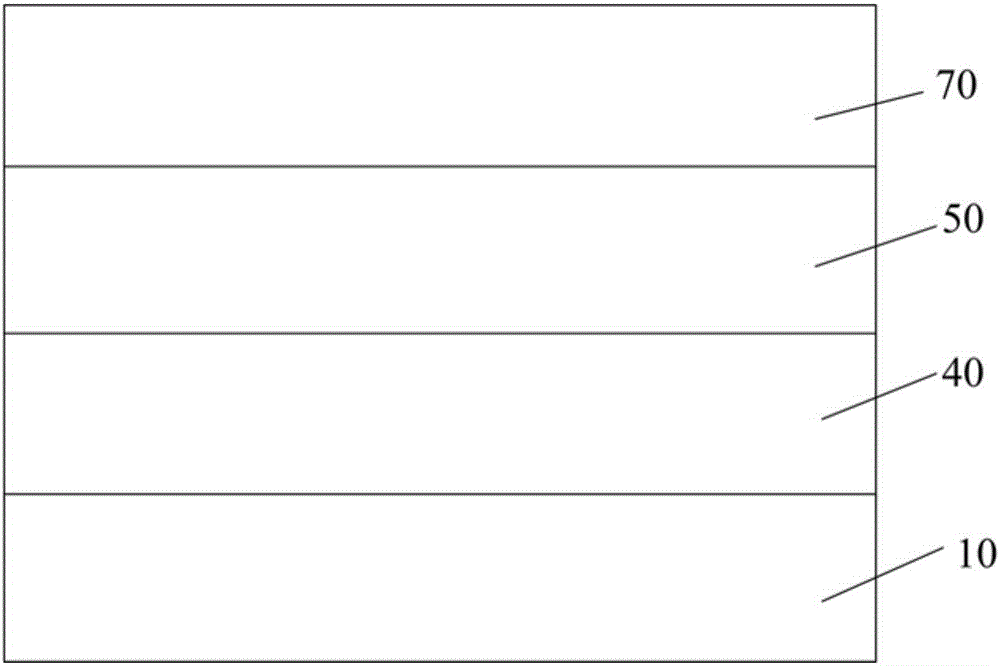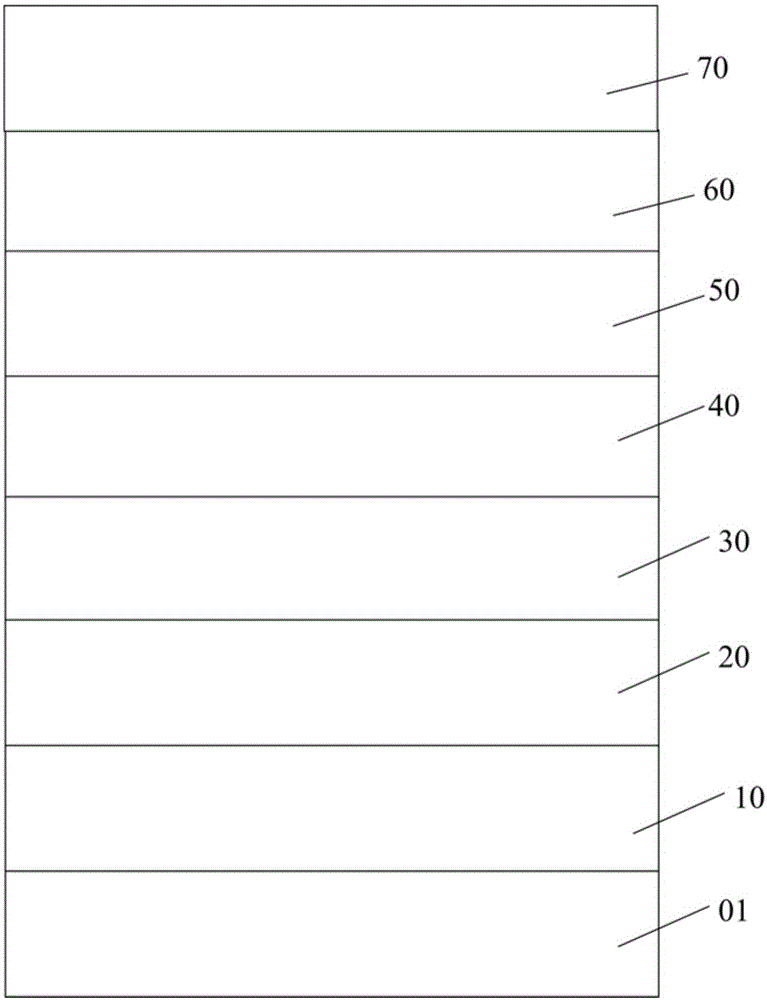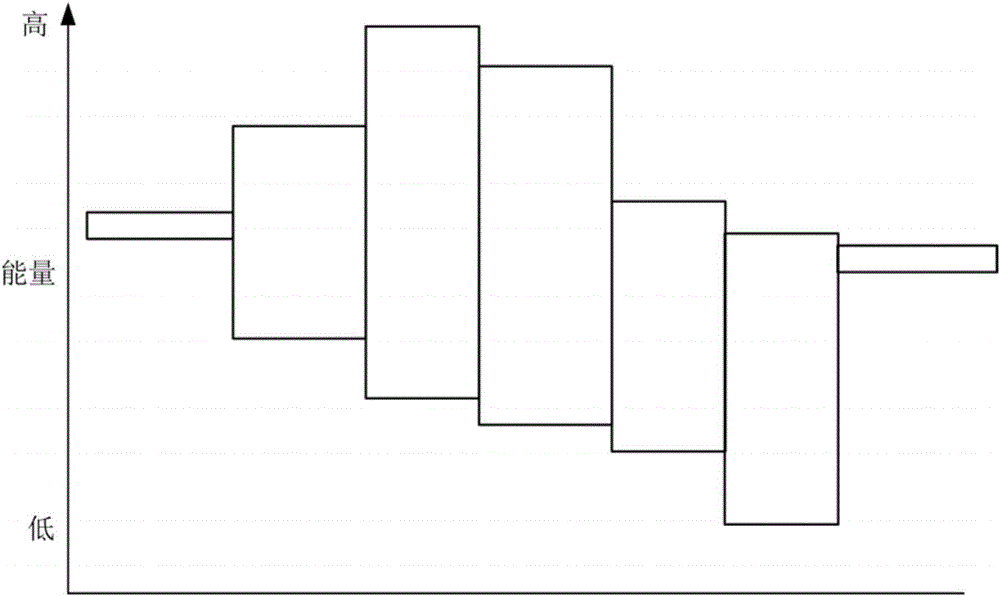Light-emitting device, display device and lighting device containing light-emitting device, and solar cell
A technology for solar cells and light-emitting devices, applied in the optical field, can solve problems such as unbalanced injection of holes and electrons, and achieve the effects of solving the unbalanced injection of holes and electrons, improving mobility, and improving luminous efficiency.
- Summary
- Abstract
- Description
- Claims
- Application Information
AI Technical Summary
Problems solved by technology
Method used
Image
Examples
preparation example Construction
[0054] In another embodiment of the present application, a method for preparing an organic polymer hole transport material-metal sulfide is provided, the preparation method comprising:
[0055] Step S1, reacting dodecanoic acid, concentrated sulfuric acid and organic polymer hole transport material in a solvent of cyclohexane and dimethylformamide at 45-55°C for 2 hours to obtain an initial reaction solution; step S2, making the initial The reaction solution reacts with the metal chloride corresponding to the metal sulfide at 65-75° C. for 2 hours to obtain an organic polymer hole transport material-metal sulfide solution.
[0056] In the above-mentioned embodiments, chemical methods are mainly used to connect the organic polymer hole transport material and the deep energy level material by covalent bonds. Taking the synthesis of PVK-CdS nanoparticles as an example, it is mainly through the side of the S atom. It is formed by connecting the C atom on the benzene ring in PVK an...
Embodiment 1
[0066] The structure of the light-emitting device is as follows: the substrate 01 is a glass substrate, the material of the anode layer 10 is ITO, and the thickness is 150nm. The second hole transport layer is set on the surface of the hole injection layer away from the anode layer 10. The material is PVK with a thickness of 30nm. The material of the first hole transport layer 40 is PVK-CdS nanoparticles with a thickness of 5nm. The luminescent material of the layer 50 is CdSe / CdS red core-shell quantum dots, the wavelength range of its absorption spectrum is between 300-610nm, the thickness of the luminescent layer 50 is 20nm; the material of the cathode layer 70 is Ag, the thickness is 100nm, electron transmission Layer, arranged between the second hole transport layer and the light-emitting layer, its material includes ZnO, the thickness is 40nm; wherein, the HOMO energy level of the metal sulfide CdS is -6.8eV; the HOMO of the organic polymer hole transport material PVK Th...
Embodiment 2
[0069] The difference between the light-emitting device provided in this example and Example 1 is that the metal sulfide is ZnS, and ZnCl with a mass of 0.0273g 2 Instead of CdCl in Example 1 2 , the HOMO energy level of ZnS as the metal sulfide is -7eV, and the HOMO energy level of the nanoparticles in the first hole transport layer is -6.3eV.
PUM
 Login to View More
Login to View More Abstract
Description
Claims
Application Information
 Login to View More
Login to View More - R&D
- Intellectual Property
- Life Sciences
- Materials
- Tech Scout
- Unparalleled Data Quality
- Higher Quality Content
- 60% Fewer Hallucinations
Browse by: Latest US Patents, China's latest patents, Technical Efficacy Thesaurus, Application Domain, Technology Topic, Popular Technical Reports.
© 2025 PatSnap. All rights reserved.Legal|Privacy policy|Modern Slavery Act Transparency Statement|Sitemap|About US| Contact US: help@patsnap.com



